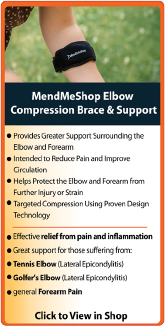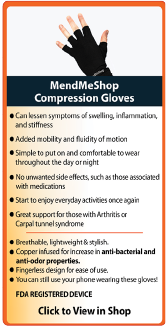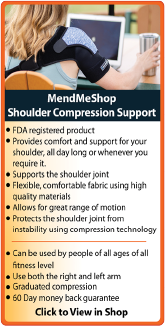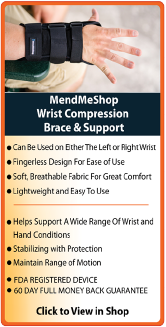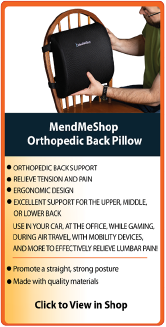|
|
Toe Anatomy and DeformitiesYour foot is made up of 3 sections. Your forefoot is comprised of 4 smaller toes (phalanges) and 1 big toe (hallux). Each one of your smaller toes has 3 bones, as well as 3 joints, whereas your big toe only has 2 joints. Your midfoot (metatarsal bones) and hindfoot (tarsal bones) make up your foot arches, instep, heel and ankle; these are responsible for weight bearing and propulsion. Your arches contain bones, ligaments, muscles and tendons of your foot, which require a lot of stability and flexibility.  Your toe bones work with your toe and foot flexor, extensor, lumbrical and interossei muscles to move your joints in 4 directions: dorsiflexion (moving toes upward), plantar flexion (moving toes downward towards sole of foot), abduction (move toes outward, away from each other) and adduction (move toes inward, toward each other). Your lower leg muscles have long tendons that cross your ankle and attach to your toe bones to help move them. The extensor digitorum longus and extensor digitorum brevis tendons attach on the top of your toes; the flexor digitorum longus and flexor digitorum brevis tendons attach on the bottom of your toes. Flat feet, improper footwear, a major injury, or disease of your toe joints, can create an imbalance in your foot, which results in your smaller foot muscles being overpowered by your larger extensor and flexor muscles. Normally your toes will lie flat, however pressure on your toes or at the front of your foot can cause them to bend and curl. Any toes that stay curled have a toe deformity. These deformities can affect all of your smaller toes, however most frequently you will notice them in your 2nd toe (as this can be the longest of all your toes; even longer than your big toe). You can also experience a toe deformity in more than one toe at a time. There are 3 types of toe deformities that are very similar - hammer toe, mallet toe, and claw toe. These conditions can either be flexible (your joint has the ability to move) or rigid (your joint has very limited and/or no ability to move). Each of these conditions has unique characteristics in relation to how the toes bend and the degree of deformity; however they share similar symptoms and treatment methods. Failure to treat these conditions can lead to the development of serious and disabling ways of walking and carrying your body, which can create alignment issues and problems with your hips or knees. Ignoring these symptoms can lead to a breakdown of tissue and/or infection. Symptoms of Toe Deformities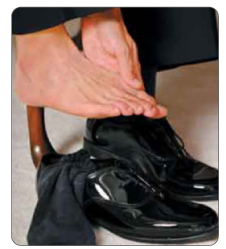 Since your toe is constantly rubbing against your shoes, it makes it difficult to find footwear that fits properly. This friction causes corns, calluses, bunions, and sometimes blisters at the point of rubbing. As a result you have constant foot pain in your toe when moving it or walking. This is generally on the top, tip or base of the toe but it can move to the ball of the foot. Cramping in your toe(s) makes them bend and take on the shape of a claw, hammer or mallet. These are very similar but occur within different areas of your toe joint, depending on which muscles and tendons contract first. The discomfort from this position can radiate from your toe to your foot to your lower leg. Other symptoms you may encounter include:
Diagnosing Toe DeformitiesNormally your doctor will take your medical history. He/she will look at your foot and toe flexibility and stability, examine your feet for any inflammation (swelling, redness, heat, location of pain) and unusual sensations, and analyze your gait (the way you walk). Occasionally an x-ray may be requested to check for arthritis or bone and joint inflammation. If unsure of the root cause of your deformity, blood tests might be requested to rule out diseases or infections. Preventing Toe DeformitiesIt is always better to prevent toe deformities rather than try to fix them after they happen, however that is not always the situation. Toe deformities can be difficult to prevent as your symptoms often start long after you've had the condition. In any case, there are a number of things you can do to keep yourself healthy and prevent further damage. 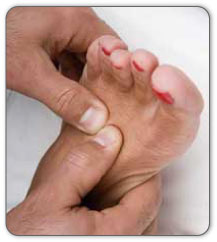 Wear comfortable, adjustable, low-heeled and roomy shoes that allow your toes to move freely. If purchasing new shoes leave a 1/2 inch space between your longest toe and the inside of the shoe; remember to buy them in the late afternoon, as your feet swell during the day. Properly sized footwear made out of breathable and flexible materials will also help prevent against corns, calluses and bunions (try to avoid vinyl or plastic). The way you walk can increase your risk of a toe deformity. If you find you wear out the soles of your shoes on one side, you may be a candidate for corrective footwear, orthotics or other foot devices. Check with a foot specialist to be sure. If you start to feel sensitive areas on your feet or toes or the development of a corn, callus or bunion use protective pads to cushion the area. Regular endurance activities and specific exercises that stretch and strengthen the muscles and tendons in the bottom of your feet will help to keep your muscles balanced and your body healthy. Follow this by gently massaging your feet after activities or long periods of standing to ease any tension in your feet. Pair this with a balanced diet to ensure optimum health. Surgery for Toe DeformitiesToe surgery can often help to straighten your toe joint in severe cases when the soft tissues in your toes tighten, become very stiff and permanently fixed (they don't move). However, surgery is not always effective; it may improve the look of your foot, however there's no guarantee the problem won't come back after surgery. It is really dependent on the type and extent of your deformity. There are a few different surgery options available, most involve minor day surgeries. A tenotomy or tendon transfer is used for flexible toe deformities; this involves releasing and/or repositioning your toe tendon to help straighten your toe. Arthroplasty is used for rigid toe deformities; this involves trimming or removing part of your toe bone that is causing the friction, irritation or pain. In more severe cases, your entire joint can be replaced with an implant. Arthrodesis, also known as a toe fusion, is used for chronic cases of rigid toe deformities. This involves removing the cartilage and some bone on both sides of your toe joint. Your toe is straightened and the toe bones are held in place with a removable pin, with the hope that your bones will fuse together over time. Most of the surgeries require you to elevate your foot and limit weight bearing activities for a while after surgery. Recovery can range from 4 weeks to 6 months depending on your surgery, your commitment to your treatment plan and rehabilitation. Complications: Swelling, pain, increased stiffness, injury to neurovascular bundle, infection, numbness in toe, failure of procedure (deformity comes back and may require more surgery). Treatment of Toe DeformitiesTreatment depends on the severity of your deformity; the goal is to relieve pain, reduce friction and transfer pressure from your sensitive areas. If your deformity is flexible, you may be able to manually straighten your toe. If your deformity is rigid, there is extra stress at the ball of your foot that prevents your toe from straightening, and you may require more extensive treatment. Treating your feet as soon as you notice any pain, discomfort, new growths (corns, calluses or bunions) or shape abnormalities is very helpful in overcoming toe deformities. Failure to see improvements with the recommended treatments may make surgery your only option. Step 1: Use a Cold Compress or Ice Pack When There is Pain & SwellingStep 2: Use a Sesamoid TShellz Wrap®Incorporating a Sesamoid TShellz Wrap® into your home conservative treatment routine is our recommended way to enhance blood flow in the treatment area (during the time of treatment and for a short duration afterward). Blood flow is how the body heals soft tissue, and when there is low blood flow (as is the case with inactive joints due to pain), your body cannot achieve a good rate of healing. Enhancing localized blood flow is really a way to ensure that you are maximizing your body's healing rate. It is through the blood the body carries the nutrients and oxygen that injured tissues rely on for recovery.. It is well known that increased blood flow helps your body accelerate the healing process. This is why the TShellz Wrap® is such an important tool. The whole purpose of the wrap is to accelerate blood flow to soft tissue in the treatment area. The end result; you relax the blood vessels within soft tissues of the treatment area. The vessels will naturally expand and allow for more blood flow to reach the very tissues you are trying to heal. In addition, this process will help clear the area of toxins and excess fluid build up, thereby reducing inflammation. As a side benefit, the TShellz Wrap® also emits heat, which is known to increase flexibility as well as elongate tissue. This is why we recommend the use of the TShellz Wrap® before undergoing activity that could cause significant stress on the area in question - if tissue is more flexible it is less likely to strain further, thus reducing your risk of incurring further injury. The less re-injury that occurs, the faster your recovery will be. Note: We recommend the Sesamoid TShellz Wrap® for toe treatment areas. What Else You Can DoWhat you want to do is make your toe and foot muscles and tendons more flexible and strong. This involves strengthening and relieving tension in the muscles and tendons of your toes and foot through exercise and TShellz® Circulatory Boost Wrap treatments which are intended to increase blood flow to the treatment area; this increased blood circulation subsequently increases the healing rate of damaged soft tissue. Alternate stretching and bending your toes, pull on them with a towel, or try picking things up with your toes like fabric, marbles or a stick (scrunching your toes). Toe and foot exercises will also help to correct any muscle imbalances.  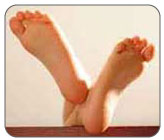 You will want to cushion your toes and give them room to move; shoes such as sandals or running shoes are often the best option for comfort. Properly sized, comfortable footwear that doesn't pinch or rub your toes is helpful. Look for soft shoes with a wide deep toe-box (shoes should be slightly longer than your longest toe to avoid any friction or rubbing). Avoid tight, narrow, high-heeled shoes, and make sure your stockings, nylons and socks aren't too snug. Soak your toes in alternating warm and cold water baths, this will provide temporary relief of tight tendons and muscles. You can also gently rub your corns or calluses while your feet are in warm water or just afterwards, with a pumice stone or nail file. Do NOT try to cut or remove these on your own, as breaking the skin could cause a serious infection, especially if you have diabetes or a disease. Apply moisturizer to your feet after your bath to keep your skin soft. Support items, such as straps, cushions, non-medicated felt corn pads, moleskin, toe shields or caps (hold down toe) can reposition your toe and relieve pressure, protect corns, calluses and bunions, and relieve pain, especially if you have flat feet. Splinting or taping your affected toe in place is also effective. Maintaining a healthy diet is very important, especially if you have diabetes; as you will be more prone to poor circulation and lack of feeling in your feet. Product Advisors are available 9:00 am to 5:00 pm Eastern Standard Time Monday to Friday. Learn More About Tendon Injuries & TreatmentsI want to learn more about Post-Surgery Recovery I want to learn more about TShellz Wrap® Circulatory Boost I want to learn more about Ice & Heat: Which Is Better For Treatment? I want to learn more about Tendonitis Treatments I want to learn more about Tendonitis Surgery FREE SHIPPING ON ALL PRODUCTS CURRENTLY ENABLED |
 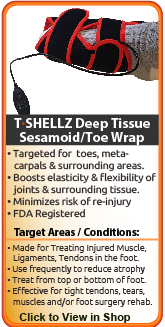   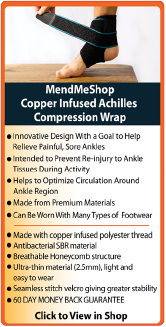 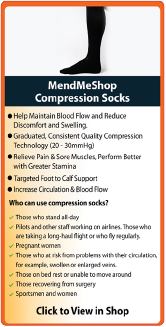 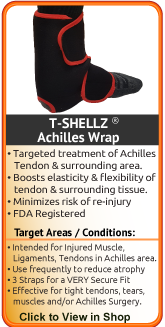   |
